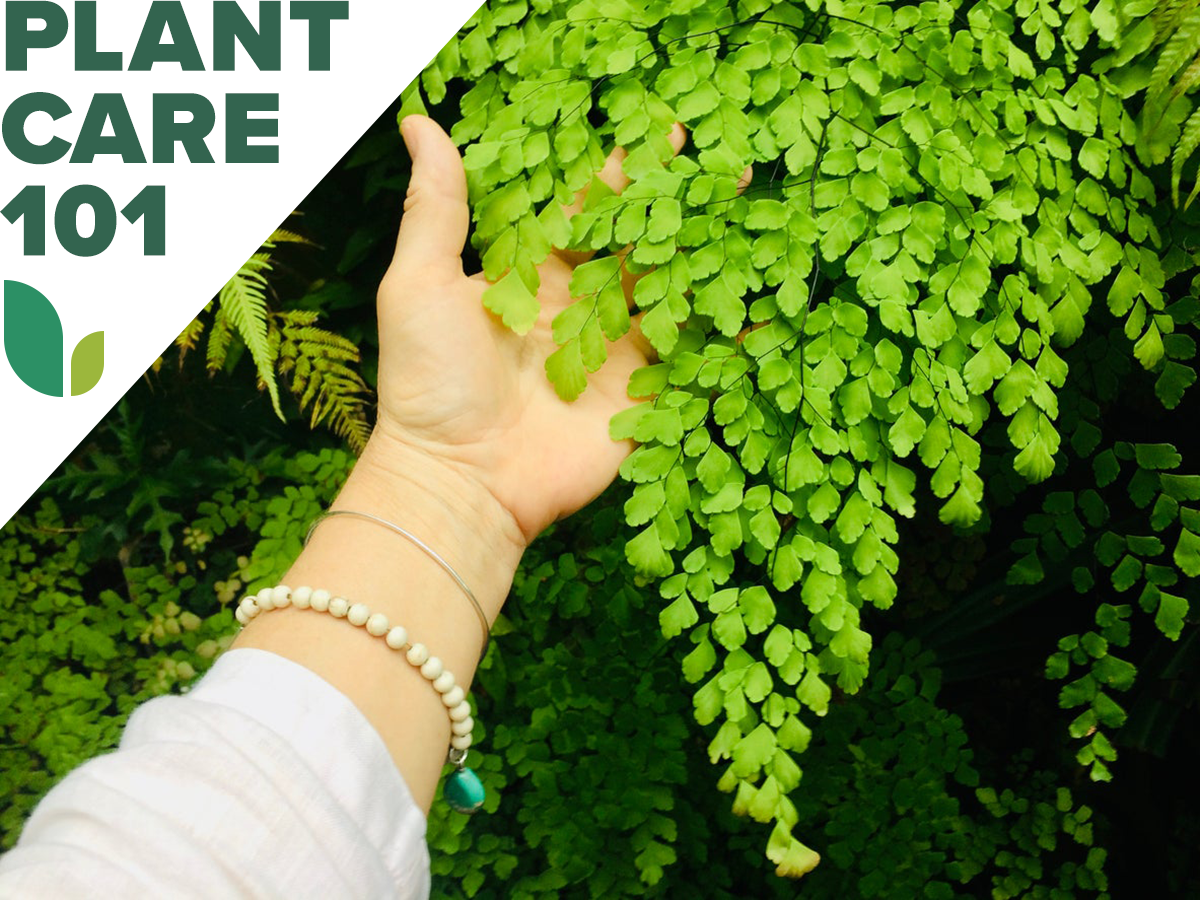

We may earn revenue from the products available on this page and participate in affiliate programs. Learn More ›
Among the frilliest of outdoor ferns, the maidenhair also can be the most formidable to grow indoors. Don’t blame this damsel for her distress, though. Due to the thinness of a maidenhair fern’s leaves, “she” requires high levels of humidity to thrive—higher than those found in the average home.
Gardeners who enjoy a challenge may want to tackle maidenhair fern care, anyway. Just avoid offending the plant’s delicate sensibilities with too much of anything except humidity—excessive sun, heat, or fertilizer could fry your maidenhair. And, if it still proves difficult, just keep in mind that “faint heart never won fair maidenhair!”
RELATED: The Best Plants for Every Room of the House
Maidenhair Fern Care at a Glance
Common Name: Maidenhair fern
Scientific Name: Adiantum spp.
Soil: Organic potting mix
Light: Bright, indirect
Water: Constant moisture
Food: Organic plant food
Temperature and Humidity: 68 to 77 degrees Fahrenheit, high humidity
Propagation: Division or spores
Safety: Nontoxic
Maidenhair Fern Characteristics
Named for their fine, dark stems’ resemblance to human hair, maidenhair fern plants grow from rhizomes. They vary in height from 1 to 3 feet and in hardiness from USDA Zones 4 to 12, and the leaflets that make up their lacy fronds can be fan-shaped, diamond-shaped, nearly circular, among other shapes. The plant’s genus name, Adiantum, means “unwetted” in reference to how water beads up on its foliage.
RELATED: 14 Symptoms of an Unhappy Houseplant (and How You Can Treat Them)
Types of Maidenhair Ferns
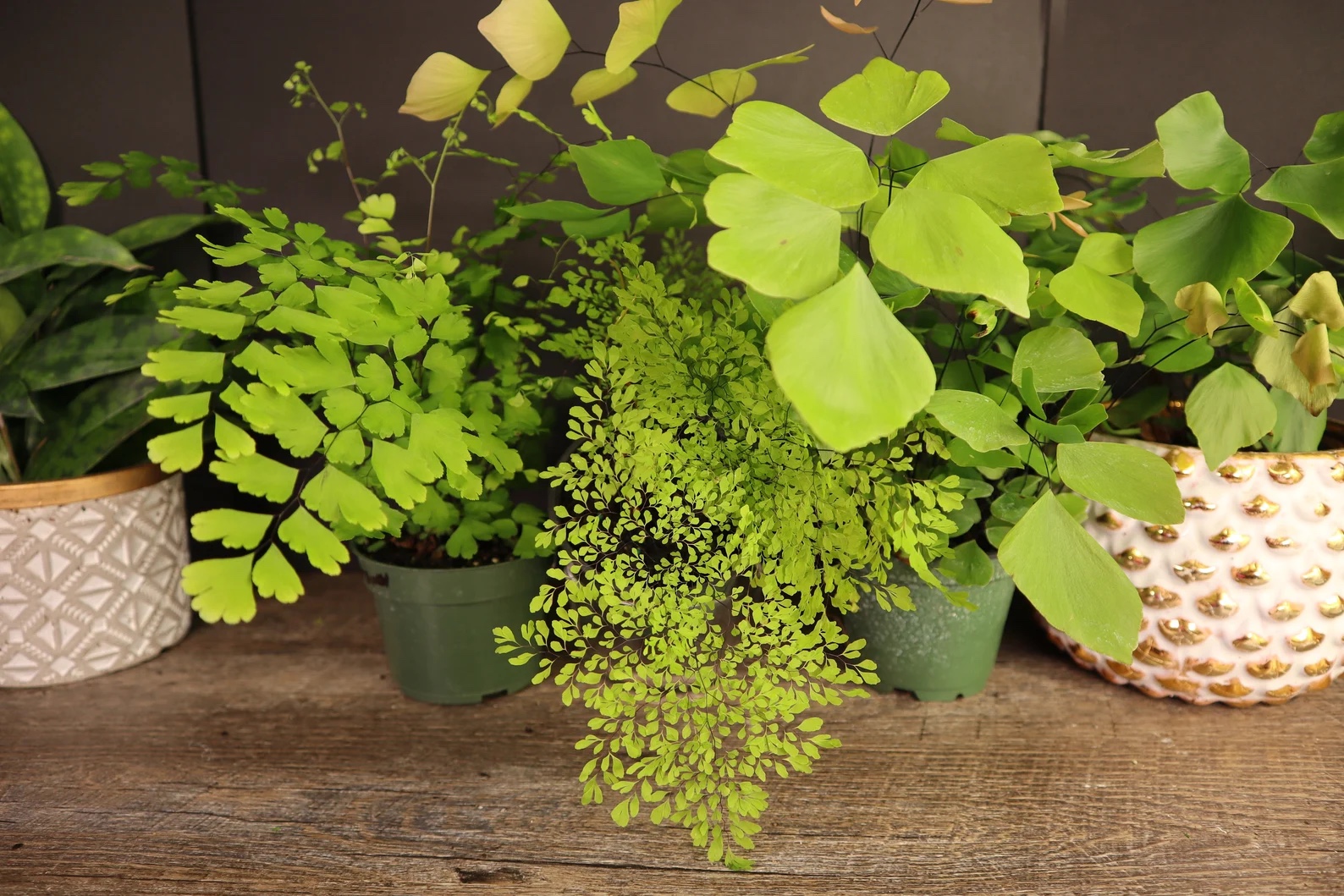
With nearly 200 types of maidenhair ferns, the one widely considered to make the best houseplant is the delta maidenhair (Adiantum raddianum), a tropical native of Brazil. The hardiest species for outdoor growing would be American maidenhair (Adiantum pedatum), which can thrive as far north as USDA Zone 3, but probably won’t prosper south of Zone 8.
- American Maidenhair (A. pedatum): Topping out at about 2 feet in height, this fern flourishes outdoors in Zones 3 through 8.
- Delta Maidenhair (A. raddianum): Hardy only in Zones 10 through 12, this delta diva generally doesn’t grow taller than 18 inches.
- Himalayan Maidenhair (A. venustum): Reaching a height of only about 8 inches, this petite plant can spread to a width of 5 feet in Zones 8 through 10, with pink new growth that eventually darkens to a medium green.
- Rosy Maidenhair (A. hispidulum): Its coloring is much like that of the Himalayan species, but the rosy maidenhair fern grows slightly taller to about a foot in height.
- Venus-Hair (A. capillus-veneris): Growing up to 1 to 2 feet tall in Zones 8 through 11, this fern (also known as the Southern maidenhair) reportedly has “hair” as glossy as that of Venus!
Selecting Soil for Maidenhair Ferns
Whether you are growing your maidenhair plant indoors or outdoors, it will require well-draining, humus-rich soil that can maintain constant moisture without becoming soggy. Outdoors, ground that contains plenty of leaf mold (decomposed leaves) is ideal.
Indoors, a combination of half peat moss and half organic potting mix should work well for a maidenhair fern—just avoid mixes that contain fertilizer pellets. Keep the plant tightly contained, with no more than an extra inch of soil between its rhizomes and the sides of its pot, which should feature drainage holes. This, too, helps prevent its soil from staying soppy, which could rot the rhizomes.
The Right Light
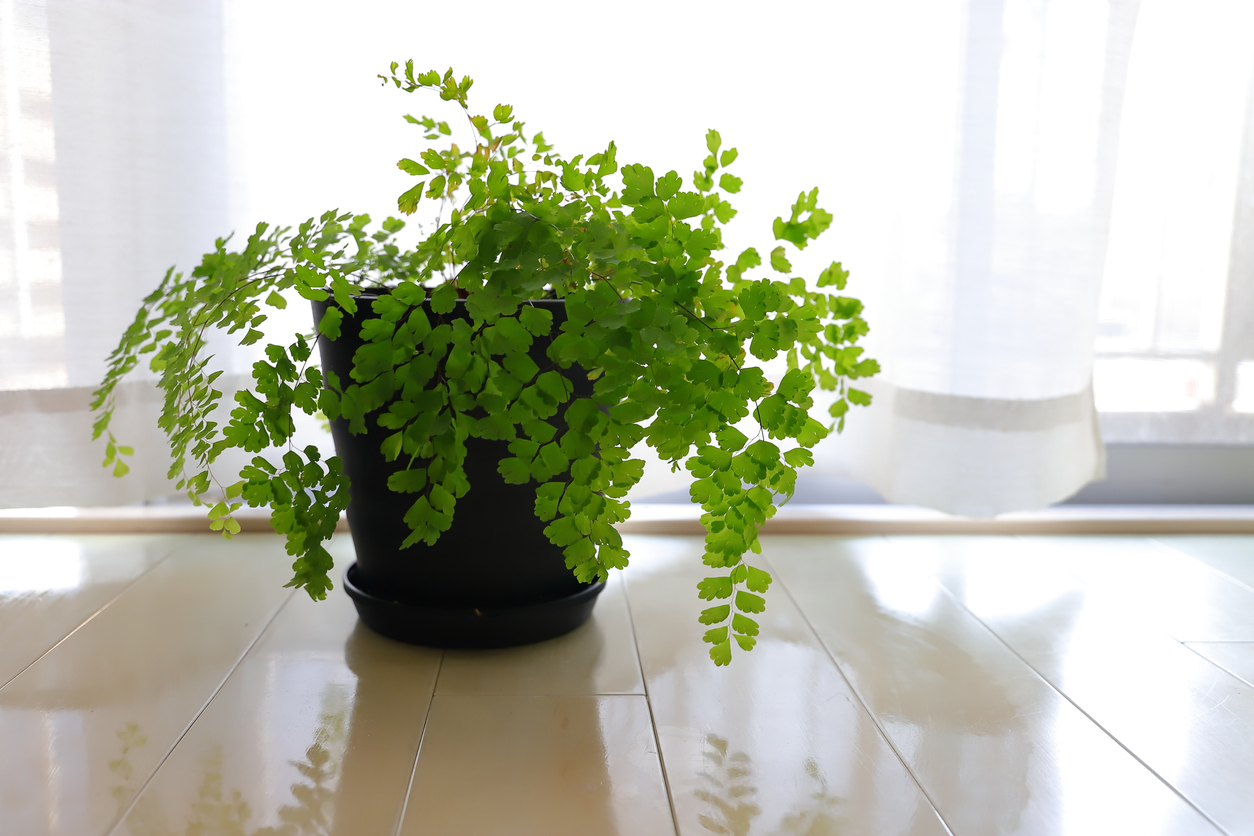
When growing a maidenhair fern outdoors, it should only receive early morning sun, the dappled sun beneath trees, or bright shade. Meanwhile, indoor ferns like bright, indirect light or east-facing windowsills that receive only morning rays. However, don’t keep the plants in spots that are too dim or they will pout. Aim for somewhere between 100 and 500 foot-candles of light.
You can achieve that level of brightness by placing your ferns far enough back from a sunny window that the rays don’t quite reach them—or by hanging a sheer curtain between the window and your plants so that they only receive filtered light. Small ferns may also thrive under a fluorescent grow light.
Watering Maidenhair Ferns
Maidenhair fern indoor care requires a careful balancing act between too wet and too dry. Water your plant—preferably with room temperature rainwater or spring water—just when the surface of its soil begins to dry out. Never wait until all of its soil has dried out completely.
Continue to water it as often as necessary to keep the soil lightly moist but not mushy, as soggy soil can cause the fern’s rhizomes to rot. Discard the excess water from the pot’s saucer shortly after you water the plant to prevent the soil from soaking it back up.
RELATED: 14 of the Fastest-Growing Houseplants for a Nearly Instant Indoor Garden
Fertilizing Maidenhair Ferns
Maidenhair ferns don’t require feeding more than once a month—and only during spring and summer. Either fertilize it with a mild organic plant food such as fish or kelp emulsion or (if you opt for a chemical fertilizer) use only about one-half to one-fourth of the amount suggested on the packaging.
Outdoor ferns generally can derive all the nutrients they need from their soil. If your soil is poor, however, you may want to add compost to it. You also can apply a balanced organic fertilizer once in spring. Avoid fast-acting fertilizers with high ratio numbers, which can singe ferns.
Setting the Temperature and Humidity
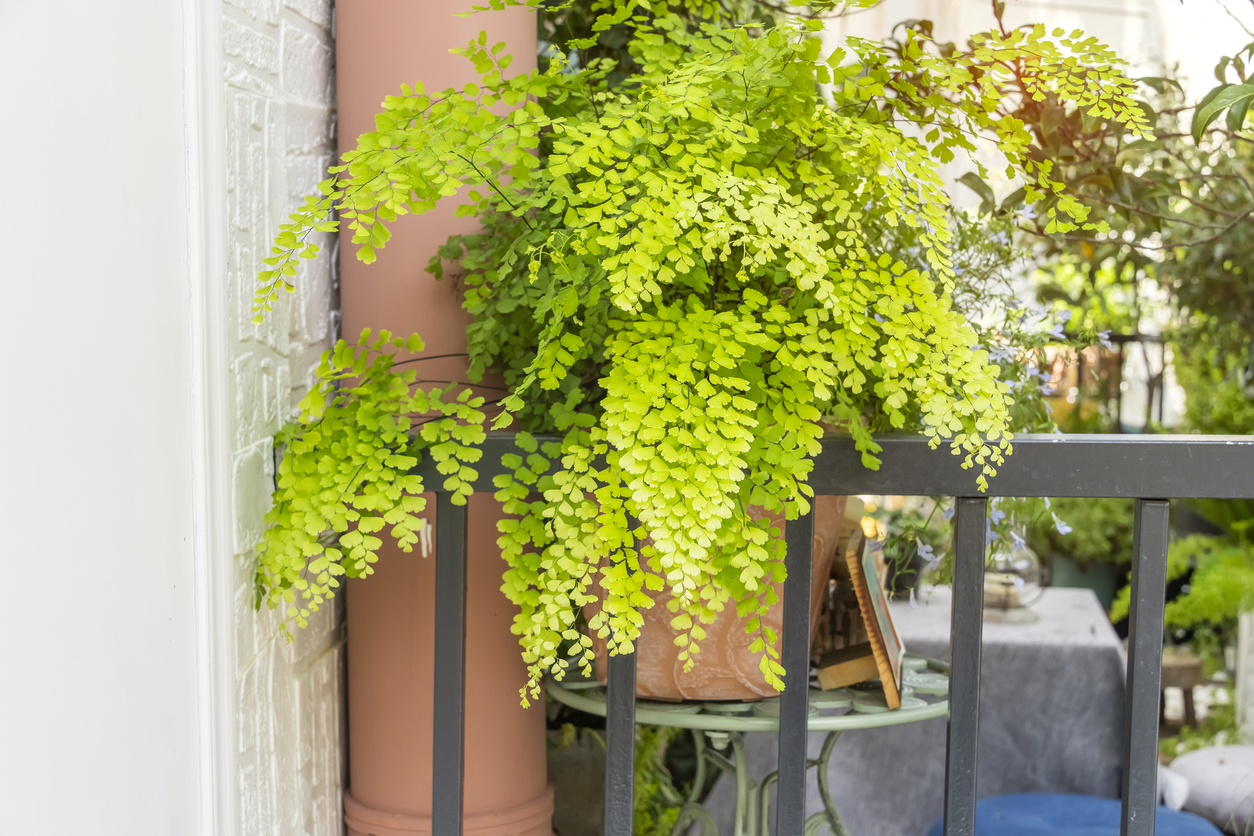
Tropical types of maidenhair fern, which are usually the species sold as indoor plants, need standard household temperatures between 68 and 77 degrees Fahrenheit. Their humidity demands are a bit more exorbitant; they prefer up to 60 percent humidity if they can get it.
Since that wouldn’t be healthy for you or your home, you can help supply their needs by placing them inside an old-fashioned fern case or large terrarium, or under a glass cloche like this option available at Amazon. Such enclosures help retain the humidity rising from the plants’ soil. Alternatively, place the ferns atop humidity trays like this one available at Amazon or in a very steamy room, such as a frequently used bathroom. If you mist them, spray the mist into the air above the plants rather than directly onto their sensitive foliage.
Propagating Maidenhair Ferns
Once the rhizomes of the fern fill the pot, divide the plant in spring to propagate it. You can do that by removing the maidenhair from its container and using a sharp knife to cut between its rhizomes to make two or more divisions. Make sure that each piece has some foliage of its own, in addition to roots and rhizomes, before you place it in its own pot of soil. You may want to keep those divisions extra-humid for a while by covering them with inverted plastic bags.
It’s also possible to propagate the plant from its spores, though that is a more complicated process. If you wish to try spore sowing, consult the American Fern Society’s instructions.
Safety Considerations
Maidenhair ferns are nontoxic plants, so they shouldn’t pose a threat to children or pets. However, fern spores floating in the air can induce symptoms similar to those of hay fever in people with allergies. Those spores also have been known to cause contact dermatitis (rash) in those who handle fern fronds frequently.
You can minimize your exposure to fern spores by keeping the plants inside the terrariums or glass cases previously mentioned. Anyone with sensitive skin should refrain from touching the undersides of fern foliage where the spores are located. The spores look like clusters of brown dots.
Potential Pests and Diseases
If your plant suddenly dies back for no apparent reason, don’t panic. The New York Botanical Garden notes that maidenhair ferns sometimes take a rest period before resprouting again a few weeks later. Even if the fern’s foliage death was due to low humidity or insufficient watering, the plant can make a comeback as long as its rhizomes are still alive.
However, stressed-out ferns may also suffer from scale or mealybugs. Since maidenhairs can be sensitive to insecticidal sprays—even the organic ones such as insecticidal soap—you may want to cut the plant back severely enough that you can remove any remaining pests by hand.
RELATED: How to Inspect Houseplants So You Don’t Bring Home an Unhealthy or Infested Specimen
FAQs About Maidenhair Fern Care
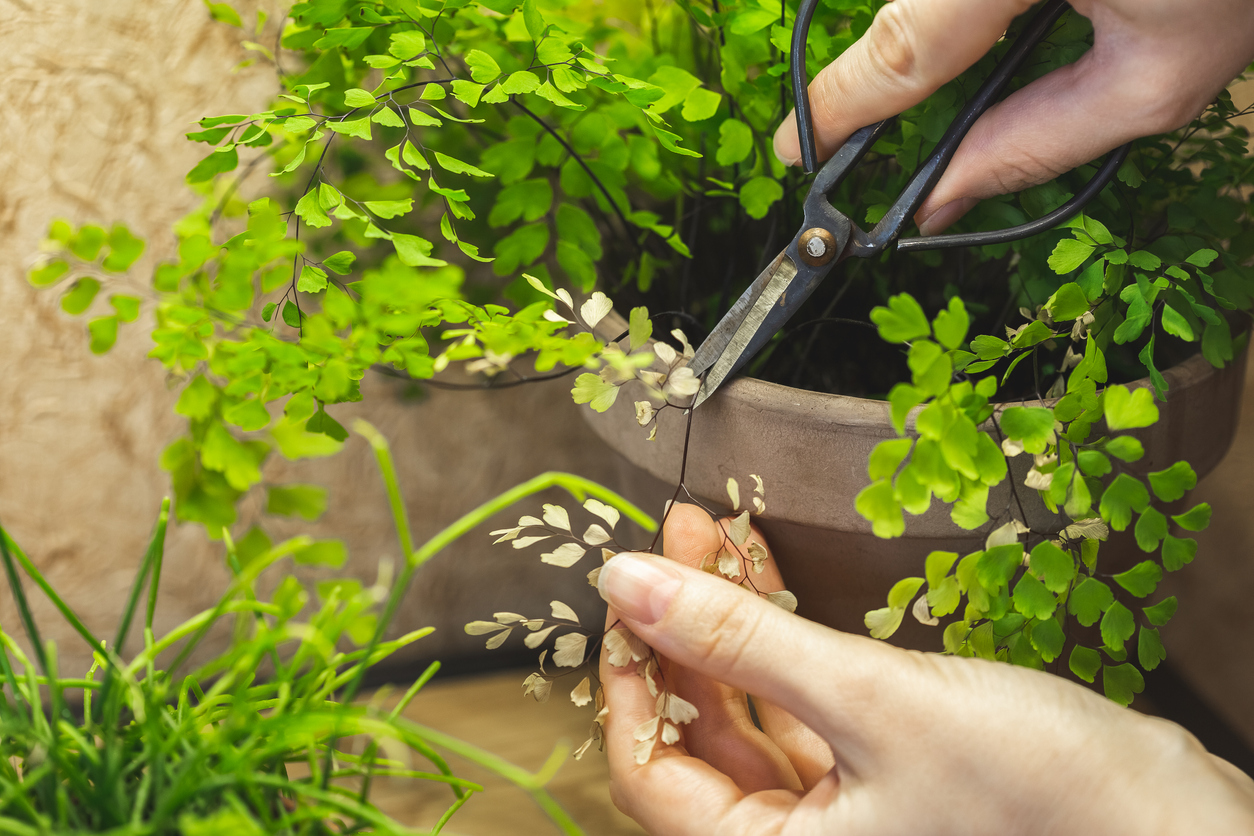
If you have questions about how to care for maidenhair fern, check out our “hair care” tips in the answers below or in the article above. Just keep in mind that, despite its reputation for delicacy, this plant might almost be considered a second resurrection fern for its ability to return from near death.
No, maidenhairs don’t need outdoor sunlight. While they can usually tolerate morning sun and thrive in bright, indirect light.
Brown tips may indicate either too much fertilizer or not enough humidity.
Water maidenhair ferns whenever the surface of their soil has just begun to dry out.
Yes, you can mist a maidenhair fern, but spray the water into the air above it rather than directly onto the foliage.
Maidenhair ferns will grow more bushy as their rhizomes creep out from the center. Pruning isn’t required except for the removal of dead fronds.
A maidenhair fern will take about 3 years to reach its mature size.
Looking for more challenging houseplants? Check out our guides on growing avocado, bird of paradise, and zebra plant.
